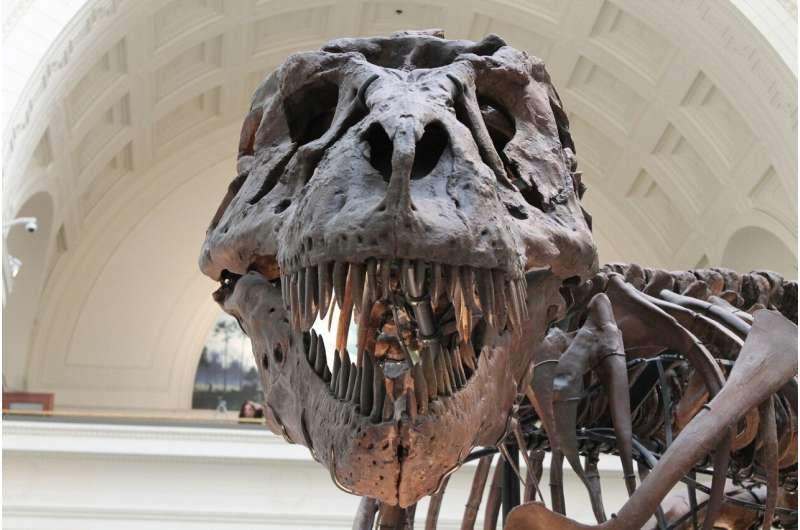January 11, 2023 report
This article has been reviewed according to Science X's editorial process and policies. Editors have highlighted the following attributes while ensuring the content's credibility:
fact-checked
trusted source
proofread
Phylogenetic bracketing suggests some dinosaurs' neuron density was equal to that of modern primates

Neuroscientist Suzana Herculano-Houzel, with Vanderbilt University, has shaken up the paleontology community with a study she conducted that resulted in evidence of some dinosaurs having neuron density in their brains equal to that of some modern primates.
In her paper published in Journal of Comparative Neurology, Herculano-Houzel suggests that some dinosaurs such as T. rex, may have had intelligence similar to that of the modern baboon.
For most of modern science, dinosaurs have been depicted as big, scary and dim witted—like oversized lizards. In more recent years, some in the paleontology community have begun to rethink such assumptions. Some have also noted that it is likely that different types of dinosaurs had different levels of intelligence.
In this new effort, Herculano-Houzel began her study by noting that in recent years, biologists have discovered that birds, which are of course evolved from dinosaurs, are much smarter than has been thought. They make up for their tiny brains by having equally tiny, densely packed neuron clusters. This observation made her wonder if perhaps dinosaurs were smarter than has been assumed too. She thought applying phylogenetic bracketing—where elements of the evolutionary tree are used to look for shared traits in different creatures—might help.
She wondered if such work might allow for estimating how many neurons were likely in the brains of different dinosaurs. Doing so, she noted, would involve making some assumptions about proportionality.
Her work involved first looking at dinosaurs as separate groups, with different levels of intelligence. She then worked on assumptions that the proportion of neurons to brain size in a dinosaur such as T. rex would very likely be approximately the same as for modern large birds, such as emus or ostriches. This allowed her to calculate how many neurons a T. rex might have, if its proportions were the same as modern big birds. In doing so, she found that the numbers approximated those of some modern primates, such as baboons.
Herculano-Houzel notes that dinosaurs like T. rex are believed to have been relatively long-lived—many might have lived for 40 or more years. If they were smart, she suggests, they might have had time to develop problem-solving skills, or to use tools.
More information: Suzana Herculano‐Houzel, Theropod dinosaurs had primate‐like numbers of telencephalic neurons, Journal of Comparative Neurology (2023). DOI: 10.1002/cne.25453
© 2023 Science X Network




















